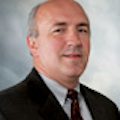Digital twin gives assurance to machine operators
Steven Holmes is international business development manager, motion control—machine tool systems, at Siemens Industry.
What have been the biggest improvements to operator-interface technology in the past five years?
Steven Holmes, international business development manager, motion control—machine tool systems, Siemens Industry: 3D graphics, LED screens with advanced multi-touch capabilities and built-in animations have aided manufacturers in everyday machining operations such as setting the tool, part offsets and entering data in fields for canned cycles. Features like these all greatly enhance the operator/programmer’s ability to accurately input critical data into the CNC control and greatly reduce the chances of errors, which can be costly in terms of time and money.
Also read: HMIs create a window of opportunity
In addition to these interface technologies, the contour handwheel gives the machine operator the ability to single-step forward and backward through the part program on the machine using the handwheel.
Steven Holmes, international business development manager, motion control—machine tool systems, Siemens Industry: Without question it is the advent of the digital twin, which gives the machine operator/programmer assurances that the program he/she is about to run on the machine has been thoroughly tested, virtually, for errors and collisions. For 100% accuracy, the digital twin must use the exact same machine parameters, NC kernel and machine kinematics as the real CNC machine; otherwise, errors can occur.
How has operator-interface technology benefitted from remote monitoring and connectivity?
Steven Holmes, international business development manager, motion control—machine tool systems, Siemens Industry: Immediately, digitalization, sometimes referred to as Industry 4.0, comes to mind. The ability to monitor essential data such as error messages, feed rates, overrides and spindle uptime/downtime in real time from a remote location is essential for overall equipment efficiency (OEE), as well as checking part accuracy and even compensating part programs automatically, either by adjusting wear offsets or part feature locations.
Also read: Membrane puts the human in HMI
Can you explain how software development has changed operator interfaces in manufacturing?
Steven Holmes, international business development manager, motion control—machine tool systems, Siemens Industry: The improvements in operator-interface software have enabled the machine operator to be more involved in the process, which makes for a more interested and engaged machinist that leads to an improved overall process with less chance of operator error.
How do operator-interface technologies figure into digital-twin platform models being used by manufacturers?
Steven Holmes, international business development manager, motion control—machine tool systems, Siemens Industry: The recent improvements in the digital twin have enabled manufacturers not only to reproduce exact models of machines, but also the digital twin of their entire factory floor and processes from quotations, scheduling, procurement, design, production and even quality control, all connected through one universal software application.
When will operator interfaces become IT-friendly enough that engineers are no longer required for installation and operation?
Steven Holmes, international business development manager, motion control—machine tool systems, Siemens Industry: I sincerely believe that that time is already here. The technology and the tools have been around for a few years now. The concern is adaptation, however.
Also read: Get back to physical interfaces
Many of the larger corporations have utilized these technologies for some time, but the smaller manufactures have been somewhat reluctant to change and adapt to changing manufacturing environments. That, too, is changing, but at a pace that needs to be accelerated, if the United States is going maintain leadership in advanced manufacturing and if reshoring is to be successful.
There is no need for an engineer to upgrade/install system software at all. Anyone can simply upgrade the system software, including the HMI, by plugging in a USB and following a simple menu-driven procedure.
What future innovations will impact the use of operator-interface technology in manufacturing operations?
Steven Holmes, international business development manager, motion control—machine tool systems, Siemens Industry: Having an interactive handwheel with didactive feedback and an integrated start-stop switch, as well as visual color-coded status display, is most certainly a feature that is a significant improvement to most handwheels currently available on the market. The capability of connecting the digital and real worlds will be the direction of operator interface. It will rely on the development of manufacturing digitalization and digital twin.
Also read: Machine builder's customers bring new machining technologies to integrate into platforms
Tell us about your company’s state-of-the-art operator-interface technology for manufacturing.
Steven Holmes, international business development manager, motion control—machine tool systems, Siemens Industry: The Sinumerik One CNC system from Siemens is the first control designed from the ground up with digitalization and the digital twin in mind. This means that, with the optimized software that allows the control to fully utilize multi-core technology, the true digital twin can finally be obtained.
With the addition of Run MyVirtual Machine, the PC-based virtual machine from Siemens, machine-tool part programs can be fully tested offline. By using this innovative software, errors and machine crashes can be diagnosed and eliminated before the first part is run on the real CNC machine.
About the Author
Mike Bacidore
Editor in Chief
Mike Bacidore is chief editor of Control Design and has been an integral part of the Endeavor Business Media editorial team since 2007. Previously, he was editorial director at Hughes Communications and a portfolio manager of the human resources and labor law areas at Wolters Kluwer. Bacidore holds a BA from the University of Illinois and an MBA from Lake Forest Graduate School of Management. He is an award-winning columnist, earning multiple regional and national awards from the American Society of Business Publication Editors. He may be reached at [email protected]

Leaders relevant to this article:


